by
Lee Mehr
, posted 55 minutes ago / 204 Views
Reviewer’s Note: While I didn’t write VGChartz’s review for The Last of Us, nor the Left Behind expansion, my thoughts generally align with each writer’s perspective.
Before getting into the pricing kerfuffle around Naughty Dog’s new “re-make-ster,” I should note that my only time spent with The Last of Us was on PS3 roughly seven years ago. Regardless, anyone can notice Sony’s avarice when this widely-successful title has now been released, remastered, and now remade for the PS3, PS4, and PS5 respectively. And unlike Bluepoint’s offerings – Demon’s Souls (2020) & Shadow of the Colossus (2016) – part of its original content has been carved out from the transition. These complaints are totally fair for a high price point, and that hurdle will be too high for many, including long-time fans. But even after personally internalizing those hurdles, The Last of Us Part I still ranks among my favorite experiences of the year.
As the script remains unchanged, Part I centers on Joel, a smuggler who witnessed the Cordyceps outbreak and suffered a tragic loss from the immediate fallout. 20 years on, the post-apocalyptic hellscape has changed him and many for the worse. Staying alive has to count for something though. His and partner Tess’s survival streak is tested when they’re tasked with smuggling a teenaged girl, Ellie, outside of Boston’s Quarantine Zone. This eventually leads to a trek across the United States, following a similar structure to Children of Men by way of The Walking Dead.
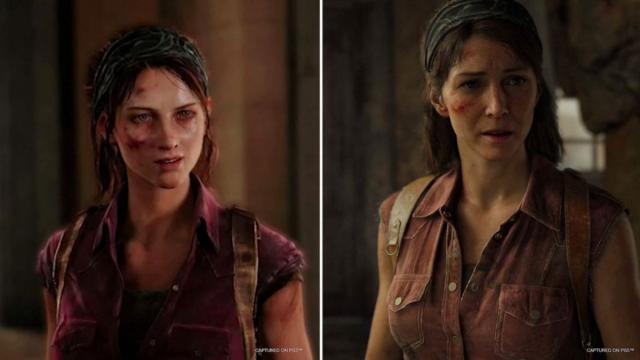
Those typical beats are fine thanks to the commendable execution, however. Consider the mutated Cordyceps strain as the framing device: a documented phenomenon in certain insect species that physically alters its host and can further its spread by releasing spores. Just that little touch on the typical zombie phenotype, plus their various stages, goes a long way towards feeling more grounded. It also skirts around the ridiculousness of modern decathlon zombies seen across many games, where broken tibias jutting through calf muscles somehow counts as a goddamn speed boost.
Even the title nestles an overarching motif that’s consistent across entries: drawing the lines between different social factions. Who’s included (us) and excluded (them) from your protected group and how far are you willing to go to protect it? What “Us” means for Joel is far narrower than most important side characters. Whether that includes closest family, humanity itself, or something in between, each scenario juggles this conflict in interesting ways; in fact, one great example of evolving group dynamics is exclusively told through collectible notes.
Beyond quality subtext and a fresh spin on zombies, Part I’s storytelling works from all of its cogs simply clinking into place: characters, dialogue, pacing, and so on. Sure, the post-prologue start drags on longer than I remembered, but once that hill is surmounted it hits a consistent stride between fresh situations, new people, and so on. Compared to Part II’s languid attitude, this succinctly navigates writing avenues that never feel inane or useless; it’s always finding ways to build up Joel and Ellie’s deepening bond.
You don’t need to be a prophet to anticipate most twists and turns, but that feels immaterial when you’re absorbed by everything else. Beyond just being well-written, maintaining a great tempo, and having substantial characters, it has a great eye for restraint and maturity that’s still not often seen in games today.
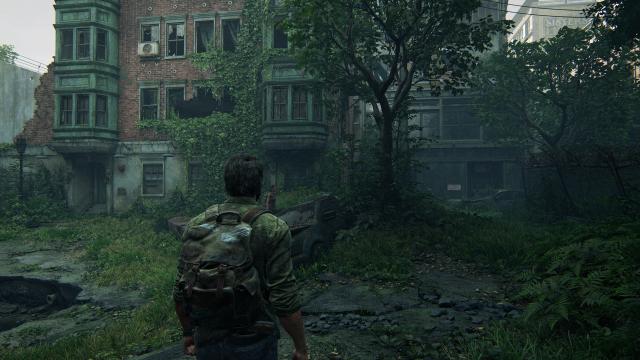
As much as I enjoyed the trip down memory lane, this re-appreciation wouldn’t hit quite as hard without Naughty Dog’s top-notch presentation. This isn’t just limited to refurbished textures and in-game lighting, either. Re-done character models during cinematics add an extra layer of authenticity that the original couldn’t quite capture. You know the cliché at this point: the assiduous attention to detail, from non-verbal cues to subtle interactions, look damn near photo-realistic. The extra dishevelled layers to every face, Tess’s precise reactions to some unwanted news, and many more examples couldn’t help but draw me in closer and closer.
I also couldn’t help but drink in its environments as a result. The incredible amount of new technical details add an extra layer of character to every locale. Part of me still can’t quite put a finger on it, but things like many secondary rooms (i.e. transitory areas between combat) feel like they have more of a story to tell. The voice acting is the same, the audio design still carries incredible heft, and Gustavo Santaolalla’s acoustic soundtrack still delivers, yet the world feels just different enough to feel fresh. Part of me feels compelled to boot up my PS3 just so I can discover those subtler background details on my own.
Put simply, Naughty Dog’s first PS5 exclusive outing follows the developer’s usual pedigree. It’s come to the point where the name can be invoked and you can safely have your graphical expectations met.
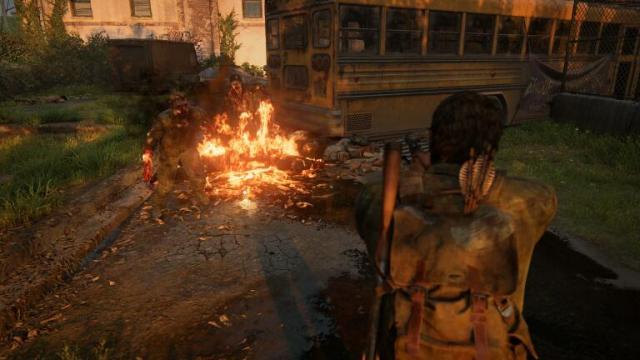
Gameplay, on the other hand, is a tougher hurdle to consider. I’ll be honest, when I first heard Naughty Dog’s emphasis on this being a “complete remake” with “modernized gameplay,” I reflexively thought of Part II’s Ellie carrying over. Imagine Joel’s bulkier size with a similar combat vocabulary as Ellie crawling under pick-ups or tables. Sadly, the overhaul isn’t revolutionary to that extent.
Before delving into those critiques, let’s briefly explore this template. That cringe-inducing “Gaming’s Citizen Kane Moment” line associated with The Last of Us has always irked me by missing the point: its scavenger stealth-action structure was an example of fusing established 7th-gen concepts, not birthing new ones. Rather than being a vanguard, its confection of third-person cover shooting, Resident Evil 5’s real-time inventory management, resource-hunting, light puzzling, streamlined stealth common for that era, and Uncharted-esque cinematic affectations all gel together and capture a fitting tone for this uncompromising world.
From its effective balancing of resources on tougher difficulties to the chunky brutality of every melee strike, that visceral feedback has never been better. Beyond the advertised audio improvements, the DualSense bumps up the intensity, especially with the little sensations felt across various weapons. There’s also a rolodex of new controllable gameplay options at your command: Permadeath, dictating the aggression level of certain enemies, and on and on it goes. When you consider these along with Naughty Dog’s prodigious accessibility choices, they certainly paid close attention to the little details afforded by the new hardware.
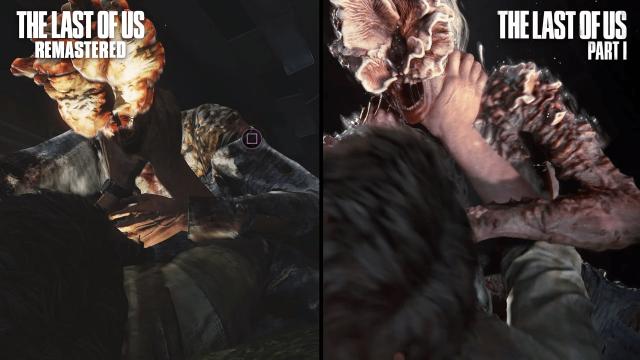
What of the bigger picture though? Part I meets at an interesting crossroads compared to Bluepoint’s titles; namely, tweaking the gameplay formula in noticeable ways. While I personally recall quality fights in the original, enough time has passed to admit the noticeable downgrade from the original’s stellar E3 demo. It’s also a shame that Part II’s more expansive & flexible dynamics haven’t completely mapped over; for instance, Clickers still go by sound detection versus genuine echo-location & hearing in the sequel. Still, the tactical acumen of your adversaries (human or otherwise) has improved: more legitimate moments of humans flanking your location, far fewer moments of stupidity, and so on and so on. Even then, it hasn’t totally handled odd issues like when certain infected will keep patrolling despite loud combat occurring near their vicinity.
On the other side of the action, friendly AI does a better job at maintaining immersion. One of the original’s funniest qualities was hearing Joel say a canned line like “Shh! Enemies ahead…” and the subsequent THWOMP THWOMP THWOMP steps from your friendlies while sleuthing around. Since your tag-alongs aren’t detectable during stealth, it wouldn’t take long before seeing them squish an enemy’s toes and stomp away without triggering an alarm. It makes sense given the consequences of doing the opposite. While not perfect, teammates’ pathfinding has been noticeably improved here. They’re quieter and more proactive in avoiding an enemy’s line of sight
The best way I can summarize Part I’s effort is this: substantive half-measures. When weighing the listed upgrades, along with neat tweaks like Part II’s safe-cracking mechanic, it still feels like a missed opportunity while not discounting the successes. No doubt it’d take a tremendous effort to refashion the level design or AI, but when someone invokes the term “remake” today it’s tough not to expect something more. If not overhauling the combat arenas then perhaps by re-evaluating the recycled puzzle breaks. You can practically taste what Naughty Dog could’ve done with a more thorough reshuffling while keeping the story perfectly intact.
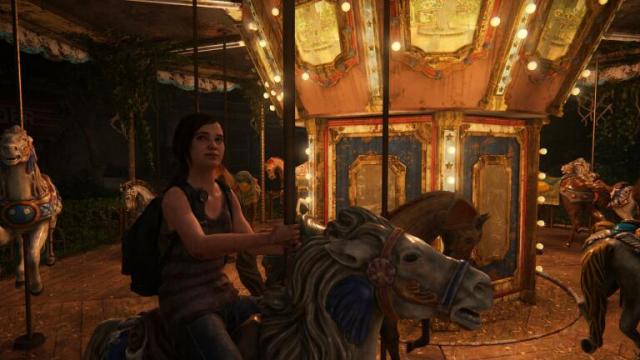
These expectations can’t help but be more pronounced by two important factors: the full $70 price point and the removal of the original’s Factions mode – Naughty Dog’s best multiplayer effort to date. It’s especially surprising given Sony’s previous attitude towards value, like dropping The Last of Us Remastered to $50 ahead of its PS4 release.
When you consider this plus Bluepoint’s basic approach to “premium remasters,” Sony’s involvement feels far more rapacious here. Beyond having more expensive versions, the Digital Deluxe ($80) and Firefly ($100) editions push sleazy extras: some early weapon/perk unlocks. Imagine how this would look if a fictitious Shadow of the Colossus: Wander Edition’s bonuses granted you 50% more stamina; that would ruin Team ICO’s original artistic vision. Even if not damaging to the same extent, the original’s design emphasis on scavenging for upgrades was already well-tuned across various difficulties. Don’t add insult to injury with these unholy mixtures of corporate checklists and game design.
Even though multiplayer is out of the picture, at least Left Behind is here and given the same attention as the main campaign. For those who may have missed out on it, Left Behind is a supplementary vignette between the main game’s fall and winter seasons where Ellie is the leading role. The same succinct storytelling can be found here alongside a few neat mechanical wrinkles. It was officially the first time players could face human and infected enemies concurrently; plus, it found new ways to explore these characters through game mechanics, like the sneaking & shooting foundation used for an innocent water gun fight. To this day, it remains one of my favorite expansions.
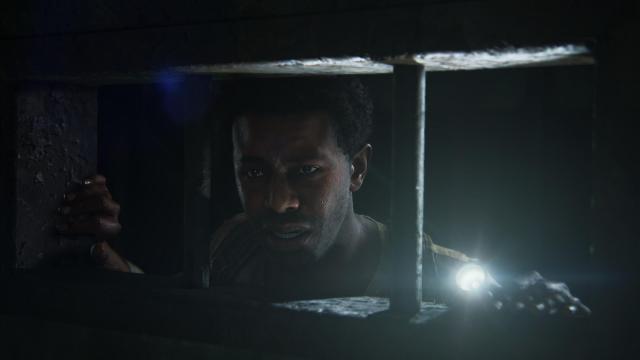
The Last of Us Part I walks a tightrope between exciting time and uncomfortable wedge about a quasi-remake’s fair market value. It’s not a fun way to lead a conclusion, but I also recognize the circumstances that compelled me to get it won’t be the same for others; you have to be excited for what technological advancements can do to these semi-old gameplay & storytelling bones. Despite meeting those specific thresholds, I still yearned for something more… concrete that could match my engagement as the original did back then. Fortunately, those pangs of reserved disappointment don’t distract enough from what’s otherwise one of 2022’s top titles.
Contractor by trade and writer by hobby, Lee’s obnoxious criticisms have found a way to be featured across several gaming sites: N4G, VGChartz, Gaming Nexus, DarkStation, and TechRaptor! He started gaming in the mid-90s and has had the privilege in playing many games across a plethora of platforms. Reader warning: each click given to his articles only helps to inflate his Texas-sized ego. Proceed with caution.
This review is based on a retail copy of The Last of Us Part I for the PS5
More Articles

Be the first to comment